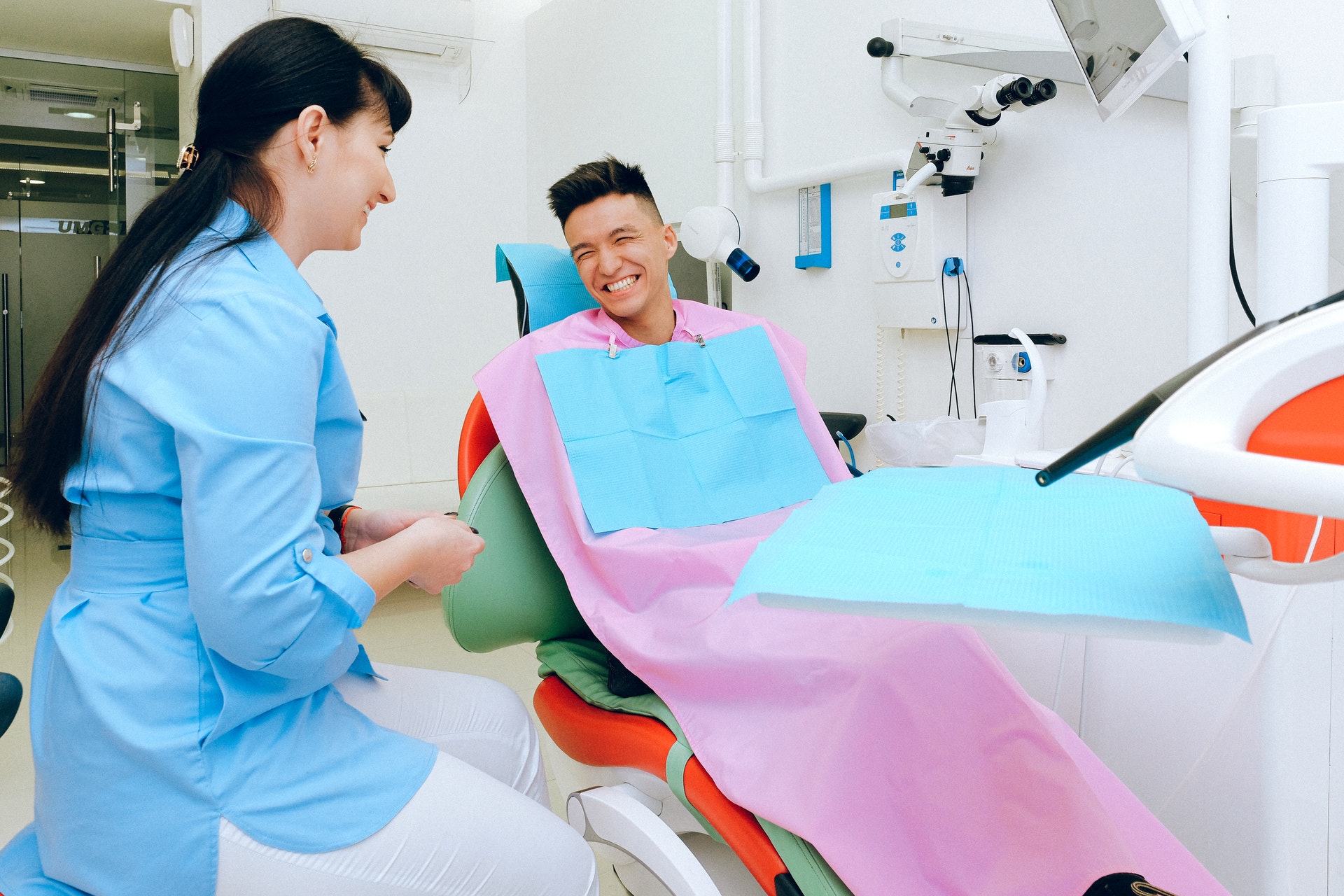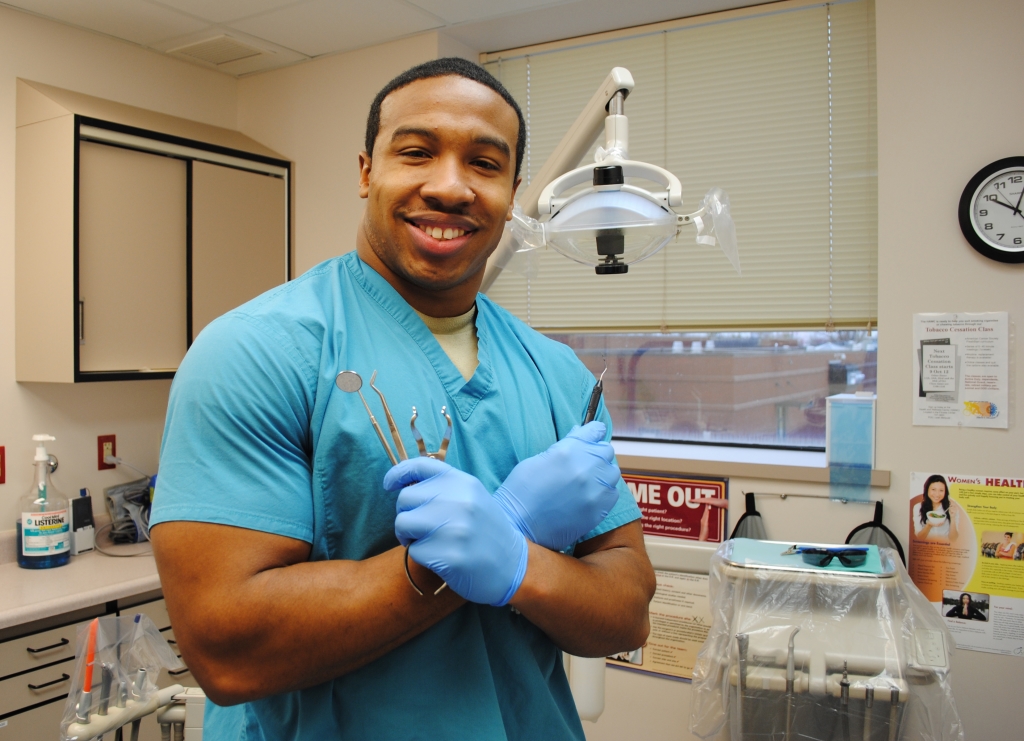It’s rare to find a dentist who will provide patients with traditional braces for their crooked teeth. Metal, ceramic, and lingual braces are typically only fitted by orthodontists. But there are other options out there to straighten teeth. Invisalign is one of the most popular and successful. Patients often ask “Do I need to find an orthodontist, or can a general dentist do Invisalign?”
Both orthodontists and general dentists do offer Invisalign. Before making an appointment with either professional, it’s helpful to find out how Invisalign works and the best way to choose a provider.
What is Invisalign and How Does it Work?

Invisalign is a removable teeth straightening device made of clear plastic. A 3D image of a patient’s teeth is used to create a series of plastic molds or trays in a lab. The patient slides the trays over their top and bottom teeth and leaves them in for about 22 hours each day. They remove them to eat, drink, and for brushing and cleaning. Every two weeks, the trays are swapped out for the next set in the series.
The trays use gentle pressure to move the teeth into the desired alignment. Within nine months to a year, on average, the result is a straightened smile.
Invisalign treatment is often preferred to traditional braces for a few significant reasons. First of all, the trays are clear, making them less noticeable than metal braces. Also, the fact they are removable gives the wearer more freedom than braces, which are cemented to their teeth. And, most patients find them to be more comfortable since they are smooth, unlike the wires and brackets of braces that can scratch and cut lips and gums.
On the other hand, Invisalign can be more expensive than braces. And although Invisalign treatment might take less time, it won’t work for some severe cases of crookedness and misalignment.
Are You a Good Candidate for Invisalign?

The first step in getting any type of teeth straightening is a visit to a dentist. Whether a patient sees a general dentist or a family dentist, they are the best judge of what type of treatment will give the best results.
Invisalign won’t work for every tooth alignment problem. It shows good results for mild to moderate crookedness, crowding, and gaps. It’s also good for people who previously wore braces but whose teeth have shifted slightly. On the other hand, braces are usually recommended for fixing extremely crooked teeth or malocclusions such as an overbite, underbite, or crossbite.
If the best option for the problem is braces, the dentist will be able to refer the patient to an orthodontist. If Invisalign will work, there is a good chance they can take care of it right in their dental practice.
What it Means to Be an Invisalign Provider

All Invisalign alignment trays are made exclusively at an Invisalign lab, no matter what type of dental professional is giving them to their patients. The 3D imaging is done at the dental or orthodontic practice and sent to the company for processing. The Invisalign team creates a unique treatment plan for the patient, along with the trays.
When an orthodontist or a general dentist decides they would like to offer Invisalign to their patients, they first must become a Certified Invisalign Provider. They receive training in the product and how to administer it to their patients. Throughout treatment, the provider will see patients for checkups. Their training will help them assess the patient’s progress and notice any problems that might arise as the teeth move.
Once a professional becomes certified, they are given a ranking based on the number of Invisalign cases they have completed. The system assigns one of eight tiers ranging from Bronze to Diamond +, with a VIP designation for dentists who have additional experience on any of the eight levels. The more patients a dentist or orthodontist helps with Invisalign, the higher their ranking.
Looking for a General Dentist to Do Invisalign

Patients interested in Invisalign to fix their crooked teeth can follow these steps to choosing the best Certified Invisalign Provider.
First, you need to know if Invisalign is a product that will work for your particular problem. If you have severely crooked teeth or a prominent malocclusion, braces might be the best option and you should see an orthodontist instead.
Second, find dentists and orthodontists in your area that offer Invisalign. If you are lucky, your own dentist is a Certified Invisalign Provider, and you will be saved from needing to search any further. If your dentist does not provide Invisalign, or if you do not have a regular dentist, you can use our online search tool. You can also go straight to the Invisalign website, which provides a list of professionals according to zip code.
Third, personal referrals, as well as online reviews can be helpful in determining if a dentist is right for you and your family. The tier assigned by Invisalign to a dentist will give you insight into how much experience they have with the product. Remember that even those who have only completed a few cases are still required to go through Invisalign’s training program.
Lastly, talk to your dentist or any dental professional who you are thinking of going to for Invisalign. Ask them any questions you have about the process. In addition to fitting you for the aligner trays, they will have you return for exams throughout your treatment to gauge your progress and make adjustments as needed. You will want to be sure to choose someone who you will be comfortable with, whose office is convenient for you, etc.
Which is Better for Invisalign—Dentist or Orthodontist?

Since both orthodontists and general dentists are trained to use Invisalign, neither is better or worse than the other. Instead, each patient needs to decide which is best for them.
Seeing a general dentist for the treatment—especially if it is their regular dentist—makes getting Invisalign and going to follow up appointments convenient. They can go to one office for teeth cleaning, dental work like fillings, teeth whitening, and to get their teeth straightened.
Another advantage of Invisalign from a general dentist is that they are familiar with the patient’s dental health history. They will have records of prior dental concerns, dental work, and reconstructions that may help them provide more thorough care.
Invisalign is a popular method of straightening crooked teeth. Part of its appeal is that patients don’t necessarily need to find an orthodontist to get it. Not only can a general dentist do Invisalign, but they may also be the patient’s best option.


